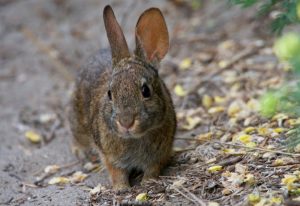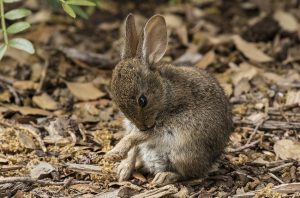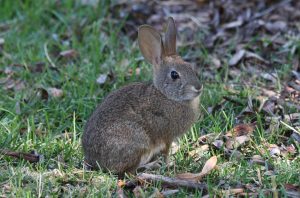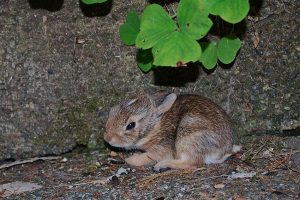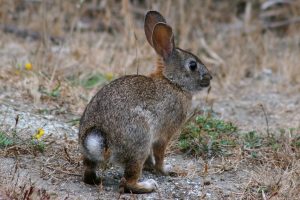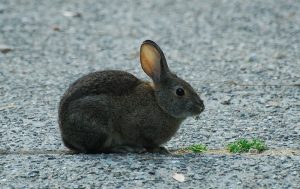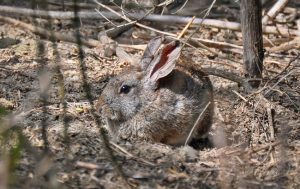Brush Rabbit
Brush rabbits are North American species and they are solitary by nature. Because of their agility and apparent timid behavior the species is a prominent name in the pet trade.
Scientific Classification
| Kingdom | Animalia |
| Phylum | Chordata |
| Class | Mammalia |
| Order | Lagomorpha |
| Family | Leporidae |
| Genus | Sylvilagus |
| Scientific Name | Sylvilagus bachmani |
Quick Information
| Also Known as | Californian brush rabbit, western brush rabbit |
| Description | Size: 10-14 in (25.4 -36 cm)
Weight: 17-32 oz (0.48-0.9 kg) Color: Light brownish to grey pelage except for the underside which is white, the less prominent tail is brown on the upper side and whitish grey underneath |
| Distribution | Along the Columbia River, Baja California Peninsula, Cascade Mountain ranges and the eastern Sierra Nevada |
| Habitat | Brushy areas |
| Subspecies |
|
| Sounds & Calls | Emits a high-pitched sound similar to cry when feels threatened. |
| Lifespan | Around 5 years |
| Diet | Plant materials |
| Adaptations |
|
| Predators | Mountain lions, foxes, snakes, bobcats, birds of prey |
| IUCN Conservation Status | Least Concern |
Behavior
- Brush rabbits are always cautious about predators and prefer to use underground ways for locomotion, but they can climb trees whenever required.
- These rabbits are crepuscular meaning they are mostly active during the twilight and may be out till the early morning.
- They thump the ground with their feet when scared.
- While escaping from the clutch of predators they run in a manner similar to a zigzag pattern. They are capable of doing this for 20-15 miles at a stretch within an hour.
Mating and Reproduction
The breeding season of brush rabbits belonging to California is December to June While for the rabbits of Oregon the season is from February to August.
Life-cycle
After a gestation period of around 27 days, females give birth to 4-5 young rabbits. Babies feed on their mother’s milk at night and after 4-5 months they attain sexual maturity.
Interesting Fact
- It has 13 subspecies which has reduced to numbers and the previous classifications are considered as its synonyms.
References
- https://animaldiversity.org/accounts/Sylvilagus_bachmani/#food_habits
- http://www.theanimalfiles.com/mammals/rabbits_hares_pikas/brush_rabbit.html
- https://www.sciencedirect.com/topics/agricultural-and-biological-sciences/brush-rabbit
- https://genomics.senescence.info/species/entry.php?species=Sylvilagus_bachmani
- http://elelur.com/mammals/brush-rabbit.html
Published on December 27th 2018 by Sahana Kanjilal under Coniferous Forest Animals.
Article was last reviewed on 9th May 2023.


